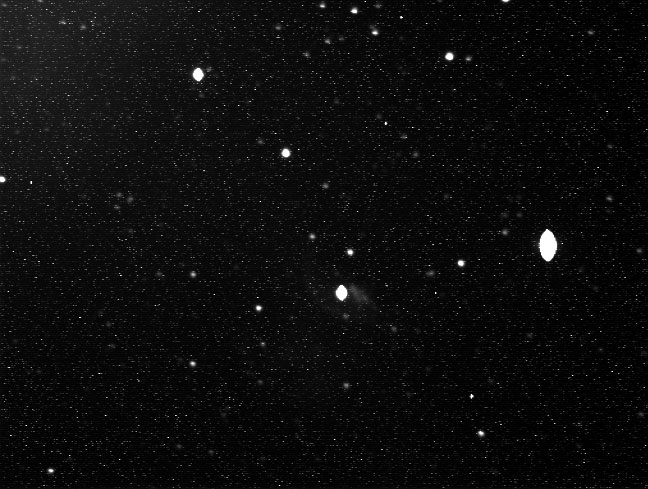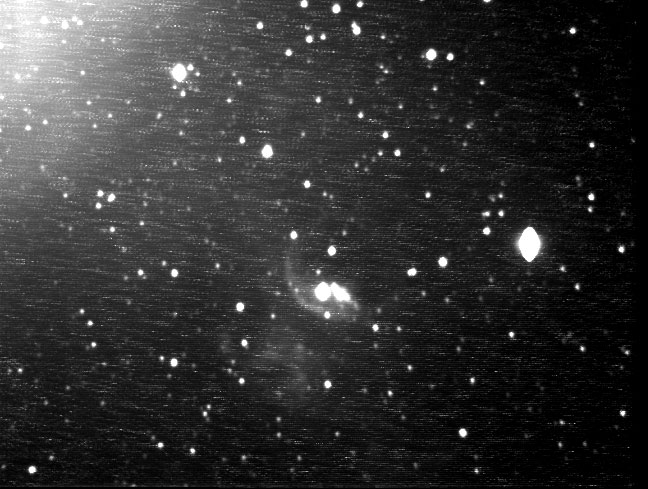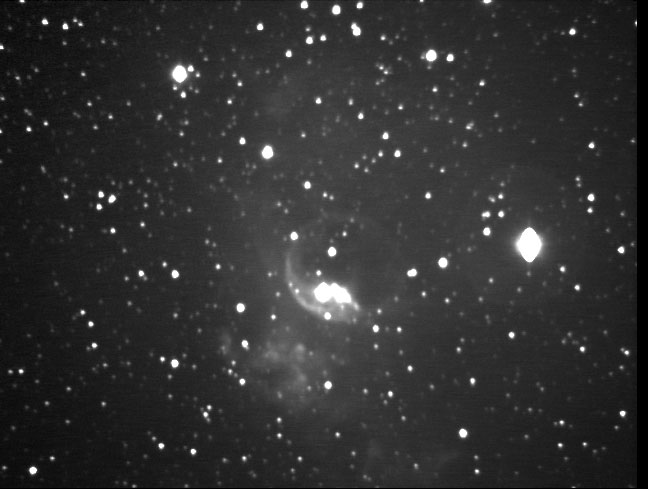These 2 things will greatly improve all images taken with most all CCD imagers and camera's.
With what little knowledge i have on CCD imaging and processing, im going to try to explain
reasons why these 2 important steps need to be taken.
Below is an image of NGC 7635.
This was taken by me a few weeks back using a Meade DSI Pro.
This is only 1 of 60 images captured that night on the luminance channel at 2 minute exposure.

As you can see there isnt much info in one 2 minute exposure
and there is a lot of noise in this image.
Also if you look closely there is effects of ampglow in the upper left hand corner of the image.
What we want to do is make an image that is smooth and noise free.
In other words something pleasing to the eye.
To obtain this we want to take as many exposures as is needed ,
then combine them to bring out as much detail as we can
without over stretching or clipping the data.
In the example below all i did was combine (or stack) all of my luminance images.

As you can see this did several things.
It enhanced the nebulosity greatly but also increased the ampglow
and because each exposure was offset the noise details show up as streaks.
Not a pretty sight is it?
But dont worry we are not done yet.
By taking dark frames for your image you can eliminate the noise and apmglow in an image.
As seen in the next image below i have combined (or stacked)the same images but just subtracted the dark frame.

Ahhhhhhhhh as you can see this has made a big improvement on this image.
By subtracting a dark frame of equal exposure time for each image before stacking,
you can eliminate the noise and ampglow.
But now if you notice there is what is known as vignetting in this image.
This is usually caused from a focal reducer being used that is not a correcting reducer.
Also if you look closely or stretch the image you will see artifacts in the image caused from dust on the optics.
This is why you want to apply a flat field image to the mix.
A flat image will eliminate the dust specks (dark halos)in the image and the vignetting.
A flat image is 1 made by doing a short exposure of an evenly illuminated object.
Myself i use a t-shirt hoop mask.This is made by using a embroidery hoop
and applying 2 layers of a white t-shirt to it.
Place this mask over the objective of your telescope and point it toward a dim light.
Using an evening sky works good for this.You could also point the scope
towards a 15 watt light bulb.
There are several methods to obtain a flat image. Now the image below has had darks and flats applied to all of the sub images before stacking.

As you can see it has greatly improved the image.
By doing these steps you will remove ampglow,noise,dust speck artifacts,and vignetting.
Now all that is left to do are adjustments in levels and curves to make this an image to be proud of.
This is the corrected image with curves and levels adjusted and star bloat removed.

I hope some of you find this insightful and have learned a few basic steps in post image processing.
Thank you for taking the time to stop by this page.
Regards
Mark
M.T.S.O Astronomy
Astronomy.Qteaser.Com
